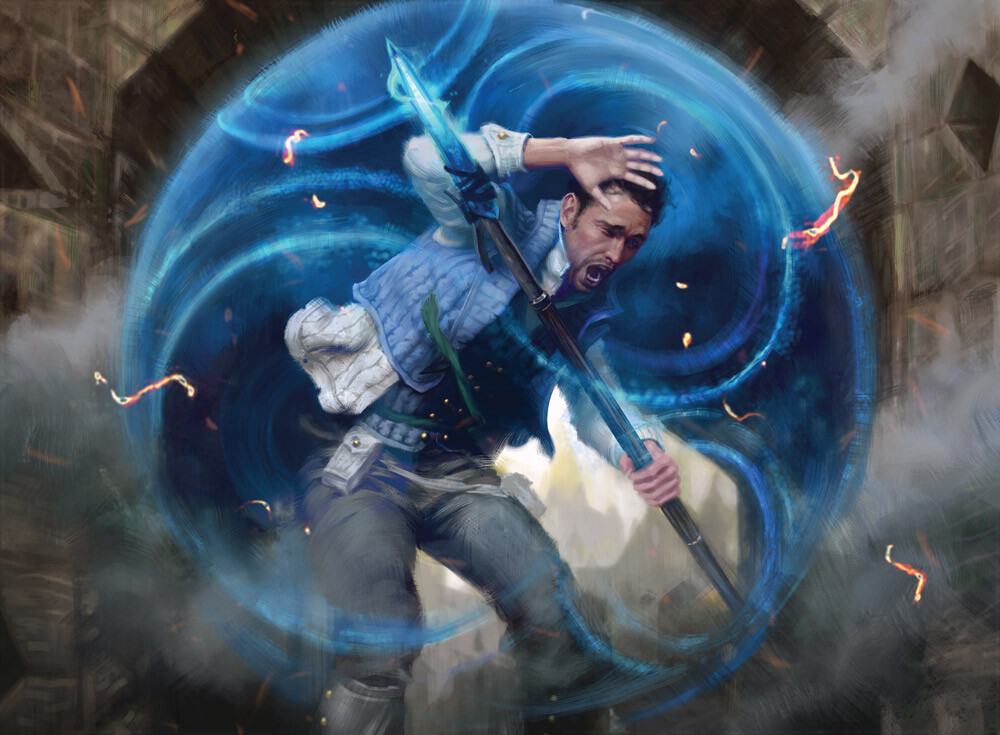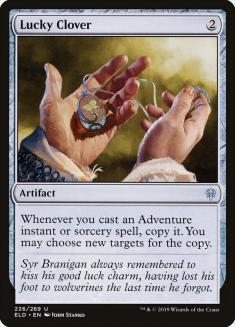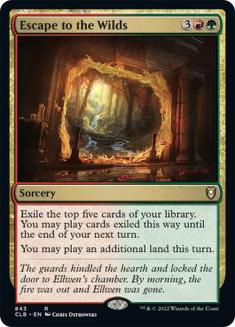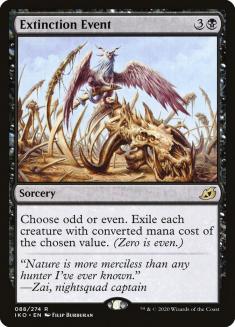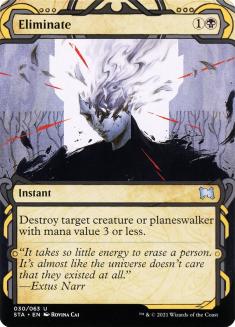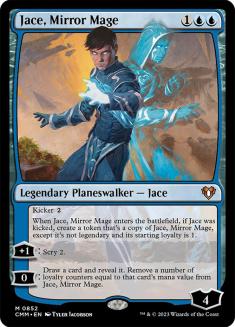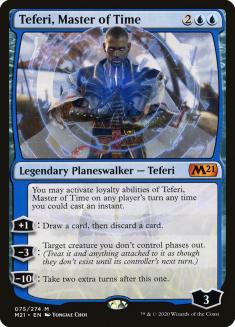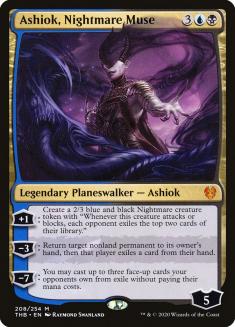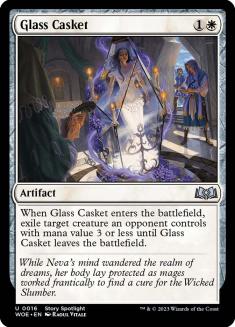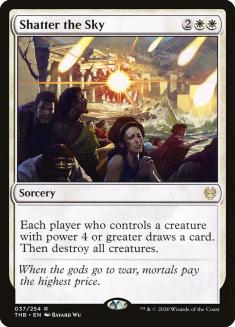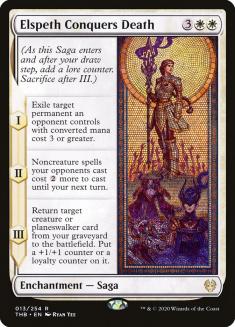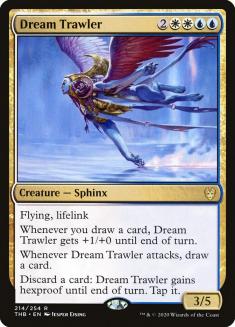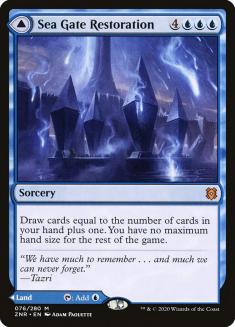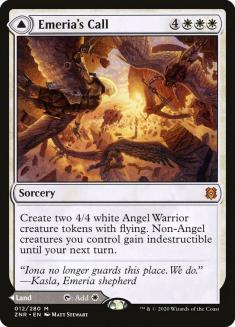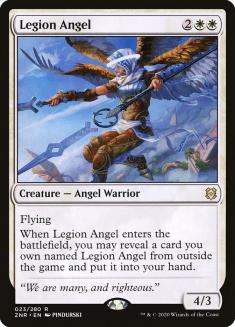There are many perks that come with exclusively playing control: the rush that hits when burying an opponent under an avalanche of card advantage, sweeping the battlefield clean, wiping the smug look off an aggro enthusiast’s face when they assume lethal was imminent, or even summoning powerful win conditions that cannot be beaten.
There are many other general advantages that I could write an entirely separate article on, but that piece can wait. The advantage of playing control, relevant to the current climate, is the protection from having cards banned from our decks.
Let’s face it: control spells are not uniquely powerful enough to get the axe. There are moments where control decks are dominant; however, the format easily adjusts, accessing the much more powerful options that WotC has handcrafted for them for the last decade. After the most recent bans, control was once again unaffected in a negative way. The opposite occurs, as it often does on these eventful Mondays.
The banning of Lucky Clover and Escape to the Wilds has dismantled the decks that had any shot of keeping control contained. Even though I am admittedly biased, I know when control is not at its best. I try to make it work, but I am not delusional when the format is unfriendly. In previous articles, I warned about the troublesome matchup all control decks had against decks containing Lucky Clover.
Lucky Clover is nearly an unbeatable card for my constituents. Artifacts are hard to answer in general, especially those that cost two mana. The ability to destroy a Lucky Clover is elusive in of itself, since the best control deck had nothing on-color that could be done. Dimir Control has been a dominant choice for control players prior to the bans. I have received glowing feedback on the performance by other players, as well as hitting Mythic on MTG Arena in one evening myself. The trick was to dodge all Lucky Clover decks, which was getting increasingly difficult.
After the Grand Finals, the cat was out of the bag. Most of us knew that Lucky Clover decks were better than everything else out there, but this tournament solidified that suspicion into reality. If the format did not substantially change immediately, Zendikar Rising Standard was going to be even worse for the average player.
I posted on Twitter that Zendikar Rising Standard was very enjoyable for me, with close, skill-intensive matches, knowing it was a hot take. Control was in a good place, before the three recent cards removed, even though one matchup was close to unwinnable. Now with that thorn out of our side, control is looking to declare itself the best Standard strategy moving forward.
Creatures (2)
Planeswalkers (7)
Lands (25)
Spells (26)

Dimir Control remains the best control deck in Zendikar Rising Standard if built like this. I have seen some very reactive versions floating around, without the power of planeswalkers, and that is not the direction control should take. This knee-jerk reaction to Dimir Rogues is understandable, replacing sorcery-speed advantage with instant-speed disruption. Although that does help the matchup, it is unnecessary. This version of Dimir Control already stomps Dimir Rogues with ease.
There were a few alterations made after the bans to the maindeck, adding another Extinction Event and a third Eliminate, to keep Dimir Rogues in check as it grew in popularity. This minor change has been a tremendous help, also hitting Golgari Adventures, Mono-Red Aggro, Mono-White Aggro, and many other creature-based decks that have emerged into the format. With Omnath, Locus of Creation gone, the floodgates are open to fans of the beatdown and we must be prepared.
The changes made to Dimir Control make this the heaviest-removal variant I have ever played in any format prior. This is a product of the times; however, there’s one big change that makes this a winning effort for control. The creatures, after multiple bans, have lost their former enters-the-battlefield gusto. Before, it would be futile to spot-remove every threat an opponent summoned, as the advantage those creatures provided would become overwhelming. Now, there is a relatively low level of punishment creatures dish out when quickly removed. This is the best time to play control, especially a version that has some of the strongest removal spells printed in the last few years.
The sorcery-speed elements are too strong to cut, especially Jace, Mirror Mage; Ugin, the Spirit Dragon; Teferi, Master of Time; and Ashiok, Nightmare Muse. These planeswalkers lay the foundation for creating an abundance of resources, outside of raw card draw. I have won multiple matches with the power of one Ugin. With all the card draw and scrying, Dimir Control can find one-ofs more easily than the competition. The absolute devastation a Turn 8 Ugin has on every matchup, after all the dust has settled from the war engaged in the turns prior, is wonderful.
The other planeswalkers operate differently. Using the abundant disruption at our disposal, they resolve on relatively clear battlefields. Teferi and Ashiok have thrived since the bans, as the creatures that gave them the most headaches are not seeing as much play. The giant creatures from green decks, as well as the small creatures from the aggressive decks, all struggle against black removal. Extinction Event is the king of Dimir Control and ruins opponents in this new Zendikar Rising Standard, even though it is not as consistent of a sweeper as Shatter the Sky is.
Dimir Control is king, even when not having access to cards like Elspeth Conquers Death, Shatter the Sky, and Dream Trawler. Even though I have no reason to explore other options at this point, I cannot help myself. Control is at such a high point currently, every avenue should be explored to give us the best chance at regaining the number one spot in the metagame. This is what I plan on testing further in the next few days.
Creatures (5)
Planeswalkers (3)
Lands (22)
Spells (30)

Although I believe Dimir Control is the best choice for control players, Azorius Control has some potential. The biggest challenge Azorius Control has is its weak removal suite, having access to only one respectable early-game option.
Glass Casket is all Azorius Control has that can be used Game 1. Swift Response is in the sideboard for additional removal in the early-game but is too weak to play in the maindeck. Even with just Glass Casket, Azorius Control still puts up a fight against the most aggressive decks with the help of Shatter the Sky.
For all intents and purposes, Shatter the Sky is Wrath of God. The opponent drawing a card is a minor drawback that is rarely affects the outcome of a game. Sweeping the battlefield clear allows Azorius Control to land a mighty follow-up play, like Elspeth Conquers Death, while the creature-based deck of the opponent walks right into it. Even if they take advantage of the free turn, a couple of critters dropped on Turn 5 are easy to handle with the resources available to Azorius Control. Since Lucky Clover, Omnath, Uro, and Escape to the Wilds are all gone, Shatter the Sky is at its cleanest.
Shatter the Sky is not the only draw to Azorius Control. Elspeth Conquers Death, although much weaker in a Rogue-infested environment, is still the most powerful disruption control can muster in one card. There are only two copies in the maindeck, but as Dimir Rogues dies down, that number will increase. The other two copies are in the sideboard and come in against any deck, even aggro, that has a handful of three-mana threats at the ready. Losing the powerful three-mana planeswalkers made the return piece of Elspeth Conquers Death weaker, but it has not fully evaporated just yet.
Azorius Control has a few creatures and planeswalkers in the maindeck still, adding Baneslayer Angel and Jace, Mirror Mage after sideboard when needed. This gives the bare minimum amount of fuel to the return ability of Elspeth Conquers Death, allowing us to play the full amount of copies when sideboarded. The strongest win condition, Dream Trawler, is the crowd favorite of all Azorius Control mages out there.
Dream Trawler is still great, even though it can be hard to resolve at times. When on the battlefield, it can end the game in a couple attacks, providing that crucial lifegain and synergy with all the card draw in the deck. There have been a few games where my follow-up to a Dream Trawler was a Sea Gate Restoration, gaining an absurd amount of life and having an unbeatable hand after. Although Mystical Dispute can be found in many decks of the current Standard, the risk is well worth it. Dream Trawler, when active, strikes fear in the heart of every archetype out there.
The rest of the deck is close to what it was before, with a few upgrades from Zendikar Rising. The manabase is the obvious change, adding in Sea Gate Restoration and Emeria’s Call. I continue to champion Sea Gate Restoration as the greatest addition to control in recent memory, outperforming its competitors on a regular basis. This holds true, even though Emeria’s Call has also been a hit. Each of these lands that enter the battlefield tapped provide enough upside to warrant the potential life loss. Manabases, in Zendikar Rising Standard and in older formats, will have these included for the foreseeable future.
The last addition to the deck was Legion Angel. Legion Angel struck me as a very interesting option for control, since it has been prevalent in white-based aggro decks. It seemed mediocre as a four-mana threat against most decks, even though it replaces itself. Aggro wins games from giant swings and early pressure, making Legion Angel an odd fit in those archetypes. Tapping mana for a threat/blocker, then having an additional one on each cast, made it the ideal candidate for a grindy control deck like Azorius Control.
Legion Angel only takes one maindeck slot and provides four threats in total. It does significantly impact the sideboard, but the current metagame is a bit too wild for me to address every flavor of aggro. At this point, Glass Casket, Swift Response, Brazen Borrower, and Shatter the Sky have been effectively working together to preserve my life total. With the aggro decks handled, the sideboard has room to experiment with a sweet card like Legion Angel.
The makeup of Azorius Control is much more sorcery-speed than Dimir Control, which is concerning. Azorius Control handles big creature decks with ease and dominates Mono-Red Aggro, but it struggles against threats deployed at instant speed. This is the reason why I am leaning heavily toward Dimir Control.
Even though Dimir Control has the absolute best removal, it loses to Azorius Control in the permanent department. The sacrifice may be worth it now, but the metagame could shift and change the power structure in favor of tap-out.
At this point, after all the bans that we all saw from a mile away, control is at its greatest point in months. Whichever you choose to battle with, success is right around the corner.

